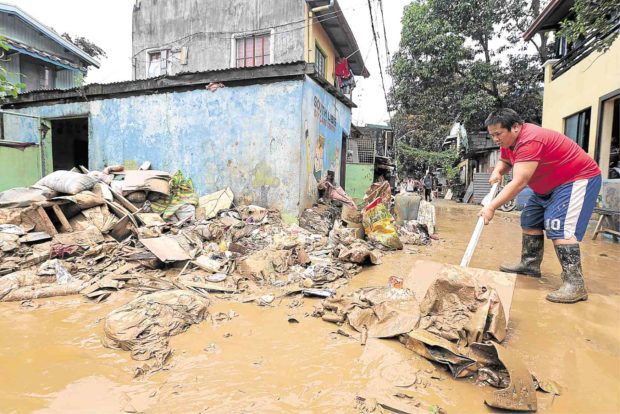Cleaning up after a storm
One would think that, being in a country hit by an average of 20 typhoons a year, Filipinos would have already had the post-typhoon cleanup techniques down pat.
One can’t help, however, to still feel lost and helpless when facing the monumental task of cleaning up after the rains have stopped, the floodwaters have subsided, and the sun is shining down on us cheerily once again.
We have rounded up tips to hopefully serve as your guide in your post-typhoon cleanup.
While inspecting your house and furniture for damages, remember to take pictures for documentation especially for filing a report for insurance.
Wash down the floors and walls as soon as you can before the silt brought by floodwater dries up. It will be much harder to remove them once they’ve caked on your floors and walls. Clean all wet surfaces with hot water and laundry detergent or dishwashing liquid.
Article continues after this advertisementYou may also use a strong bleach but make sure that you are in a well-ventilated room when doing so.
Article continues after this advertisementElectrical outlets
Make sure all electrical outlets are dry before switching on the main power source.
Power outlets that have been submersed in floodwater need to be opened. Use an air compressor with a hose, like what painters use, to flush out remaining water. Then leave your power outlets for a day or two to let these dry thoroughly before switching them on.
Upholstered furniture
Cleaning mattresses and upholstered furniture such as couches is probably the one of the toughest, post-flood.
These are the ones which soak up contaminants and bacteria from floodwaters the most and also the most likely to develop molds and mildew.
Wash down upholstered furniture and mattresses with disinfectant immediately. Squeeze your foam cushions as hard as you can to extract all the water it has absorbed. Put these out in the sun and rest these on blocks, keeping them suspended above the ground, so these can dry thoroughly.
Pay attention, however, to any musty odor as this is a sign of mildew and can be a health risk. If you have the budget for it, ask a professional to do the cleaning of your upholstered furniture and mattresses so these can be sanitized properly.
Wooden furniture
Wooden furniture that have been submerged in water might be easier to dry compared to upholstered ones. All one has to do is wipe the wood down to remove excess water and let them air dry.
Some furniture restorers recommend drying wooden furniture indoors instead of placing them under the sun as the latter may cause the wood to crack. Use electric fans instead to help make drying faster.
After being soaked in flood, your cabinet drawers would surely be swollen. Allow the drawers to dry and return to their normal size first before pulling them open. You may expedite drying by removing the back panels of your cabinets, if you can.
Remove mildew spots from your wooden furniture with wood alcohol or turpentine. You may also want to use wood cream restorers which are available in hardware stores and
Sources: Restoration Master (restorationmasterfinder.com); National Ag Safety Database (nasdonline.org); The Spruce (thespruce.com); and the Centers for Disease Control and Prevention (www.cdc.gov)
